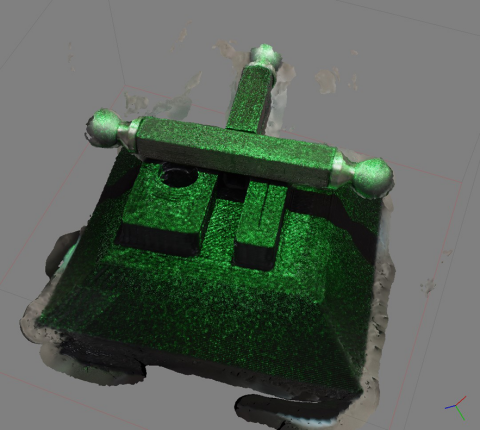New camera-based 3D measurement systems for high-precision coordinate metrology will be developed. Techniques to be considered include photogrammetry and fringe projection, including hybrid designs. A number of case study components will be measured using the techniques to demonstrate their performance with different geometries, materials and surface textures.
StudentSupervisor |
Introduction
Photogrammetry is defined as the science of measurement through the use of photographs. Stereo photogrammetry is one of the most commonly used techniques and involves the triangulation of common points between two images. The simplicity of photogrammetry has meant that it has been used as a method of measurement since photography was invented in the 1830’s. For the first fifty years, photogrammetry was mainly used by architects as a fast and easy method of measuring buildings. It was not until the rise of digital computers that stereo photogrammetry could truly be considered for accurate close range measurements. The potential of stereo photogrammetry was now only limited by the models and imaging process used. As a result, research into reconstruction and calibration algorithms flourished, giving rise to the modern methods seen today. The recent advancements in digital photography have also been significant. Through careful calibration and the correct equipment, the 3D digitisation of sub-millimetre object features to a measurement uncertainty of a few microns is possible.
Current work
The main area of research will be focused on improving the imaging methodology as to minimise the uncertainty of the measurement. This will involve the improvement of the methods already being used, as well as exploring new imaging techniques that are yet to be applied to photogrammetry. Imaging methods to be considered include plenoptic and single pixel cameras.
The limitations of the sample texture and geometry will also be considered. Photogrammetry relies on the presence of features that can be matched between images in order to triangulate their position in space. Lack of features and occlusions will therefore play a significant role in the performance of a photogrammetry system. The use of laser speckle as a form of texture projection is currently being used to allow the measurement of very smooth surfaces.
Standards for the verification of a photogrammetry based system are still very limited. As such, the development of a standard verification process specific to photogrammetry will be a significant part of the work.


